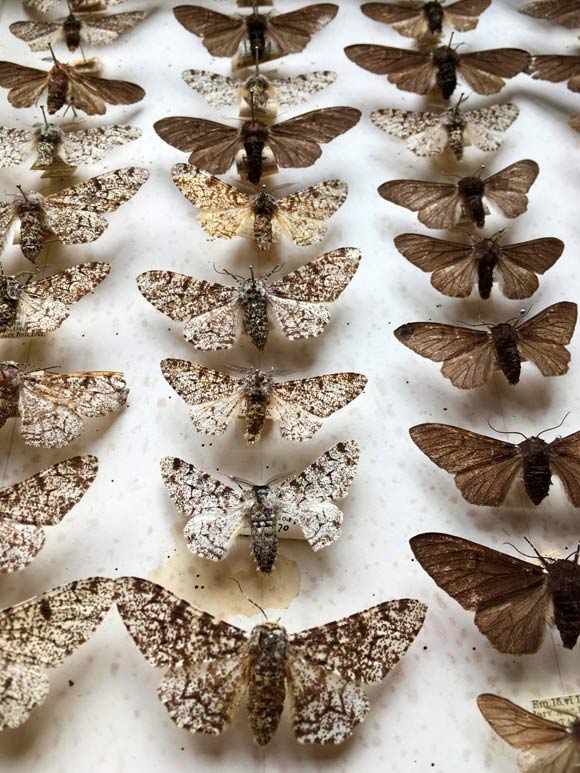A team of researchers at the University of Exeter has confirmed the classic textbook example of evolution in action — a phenomenon called industrial melanism in the peppered moth (Biston betularia). The team showed that differences in the survival of pale and dark forms of the moth are explained by how well camouflaged the moths are to birds in clean and polluted woodland. The results appear in the journal Communications Biology.
Animal defensive coloration has long provided many important examples of evolution and adaptation.
Of these, industrial melanism in the peppered moth is one of the most famous textbook examples of evolution in action.
The common pale form of the moth is camouflaged against lichen growing on tree bark.
During the Industrial Revolution — when pollution killed lichen and bark was darkened by soot — a darker-winged form emerged in the United Kingdom.
Later, clean air legislation reduced soot levels and allowed lichen to recover — causing a resurgence of pale peppered moths.
The example has been well supported by many studies, but nobody had ever tested how well camouflaged the moths were to the vision of their key predators — birds — and how their camouflage directly influenced survival.
Now University of Exeter’s Professor Martin Stevens and Olivia Walton have shown that, to the vision of birds, pale moths are indeed more camouflaged against lichen-covered trees than dark moths — making pale moths less likely to be eaten by birds in unpolluted woodland and giving them an evolutionary advantage.
“This is one of the most iconic examples of evolution, used in biology textbooks around the world, yet fiercely attacked by creationists seeking to discredit evolution,” Professor Stevens said.
“Remarkably, no previous study has quantified the camouflage of peppered moths, or related this to survival against predators in controlled experiments.”
Most birds can perceive ultraviolet light and see a greater range of colors than humans, and the team analyzed how well pale and dark moths matched lichen-covered and plain tree bark, as seen by birds.
To do this, the study authors used museum specimens including some from the collections of Bernard Kettlewell, who conducted famous research on the evolution of the species in the 1950s.
They also created artificial moths, baited them with food and observed predation rates in UK woodland, mostly in Cornwall.
“Through a bird’s eyes, the pale peppered moths more closely match lichen-covered bark, whereas darker individuals more closely match plain bark,” Walton said.
“Crucially, this translates into a strong survival advantage; the lighter moths are much less likely to be seen by wild birds when on lichen-covered backgrounds, in comparison to dark moths.”
In the experiment using artificial moths, lighter models had a 21% higher chance of ‘surviving’ (not being eaten by birds).
“Using digital image analysis to simulate bird vision and field experiments in British woodland, we compared how easily birds can see pale and darker moths, and ultimately determine their predation risk,” Professor Stevens said.
“Our findings confirm the conventional story put forward by early evolutionary biologists — that changes in the frequency of dark and pale peppered moths were driven by changes in pollution and camouflage.
_____
Olivia C. Walton & Martin Stevens. 2018. Avian vision models and field experiments determine the survival value of peppered moth camouflage. Communications Biology 1, article number: 118; doi: 10.1038/s42003-018-0126-3








